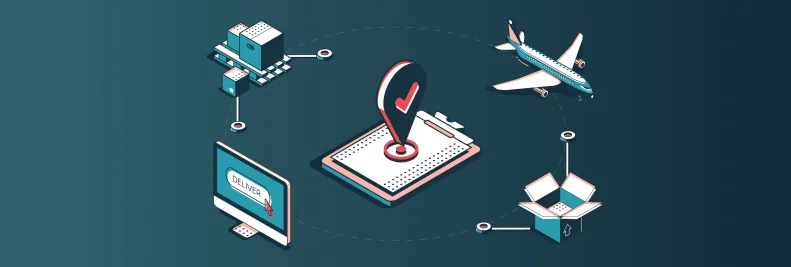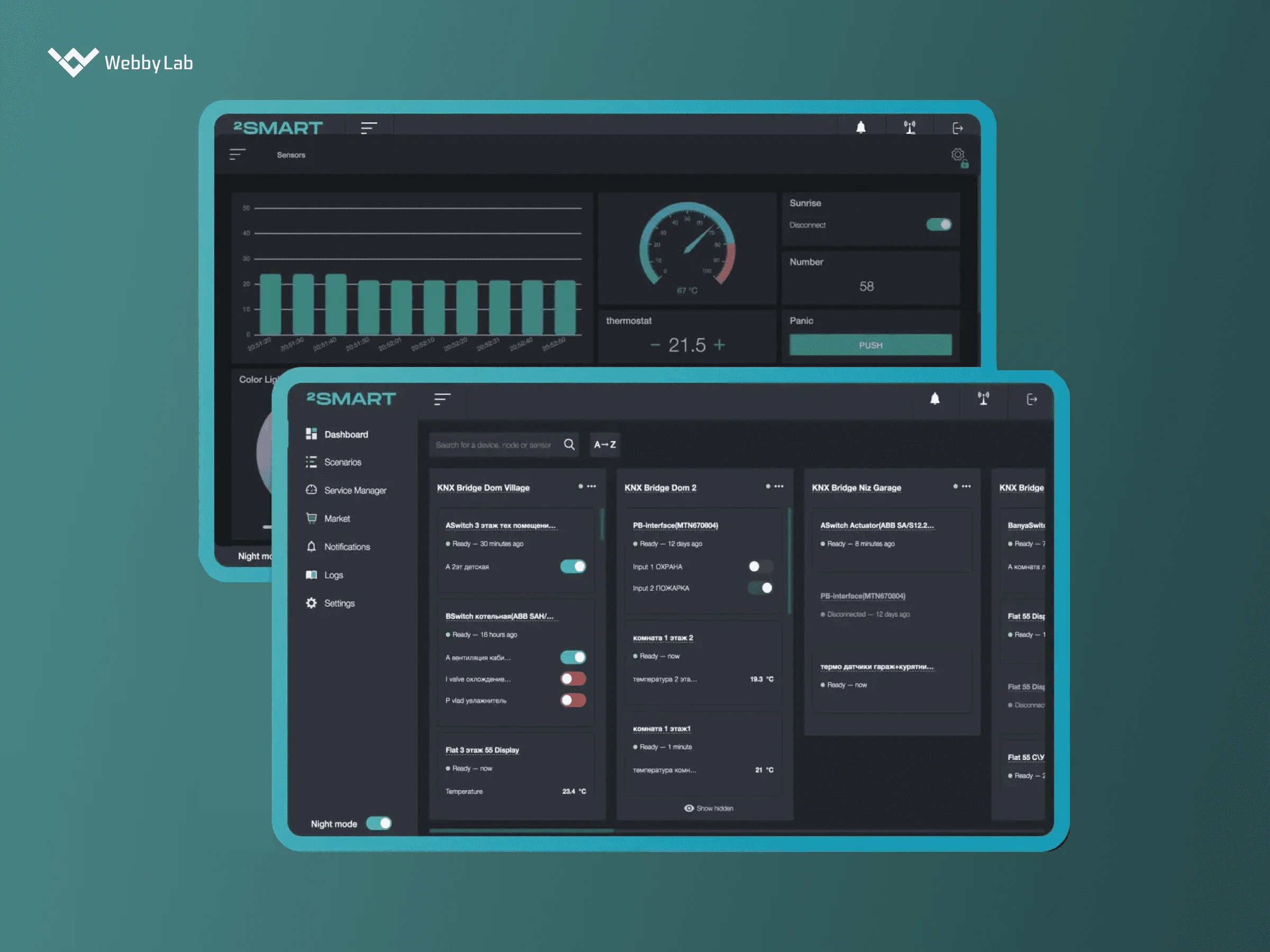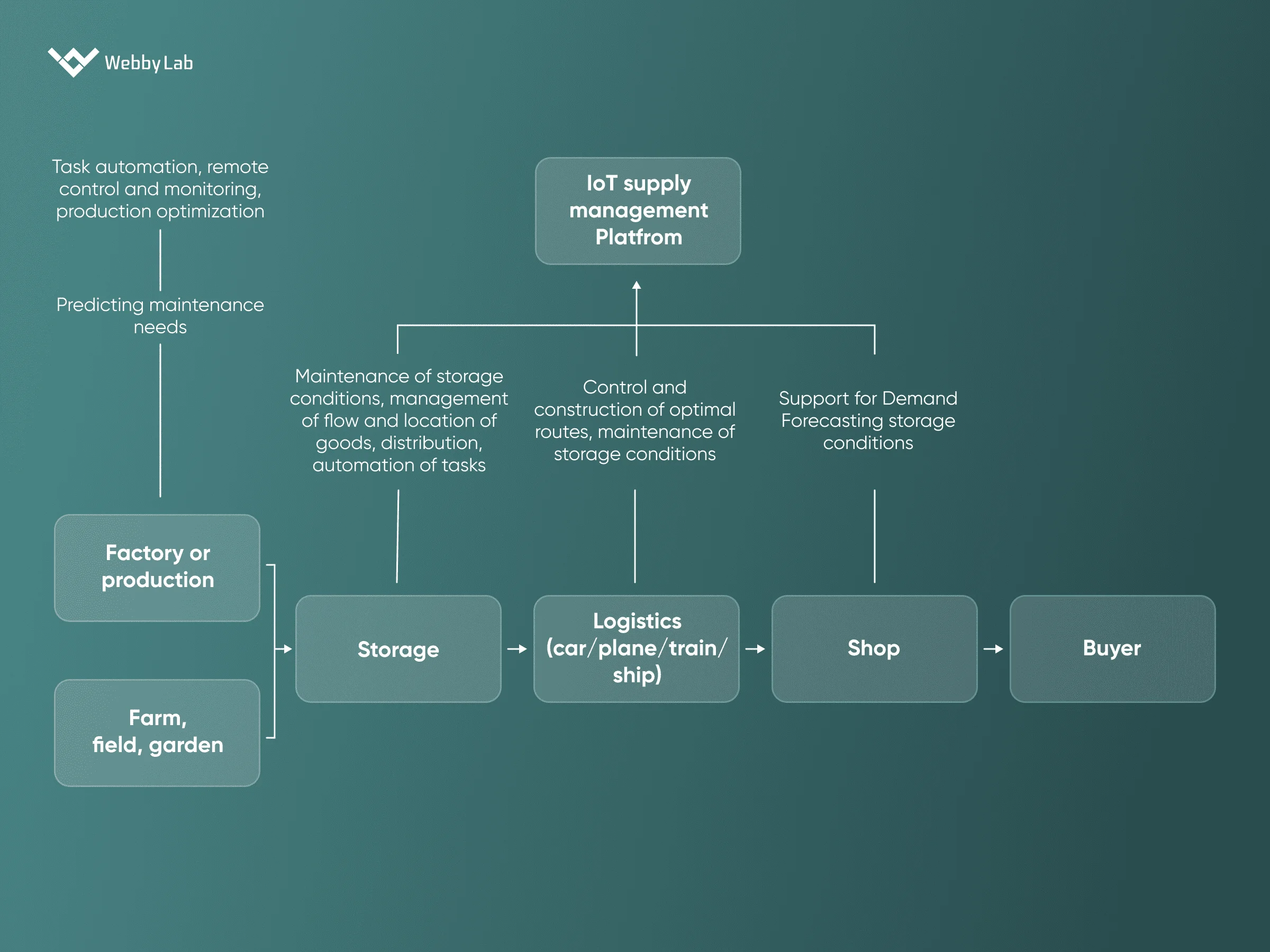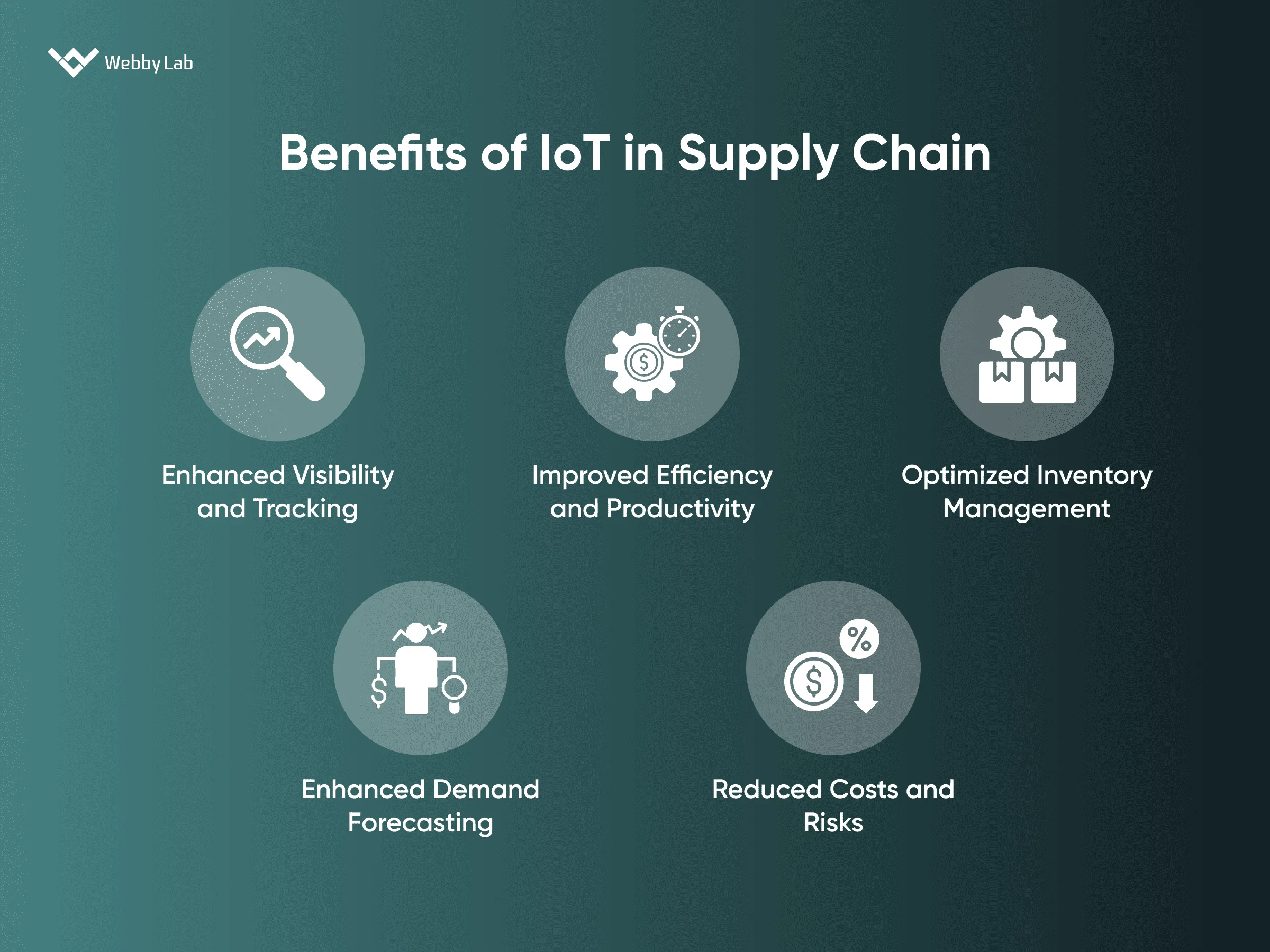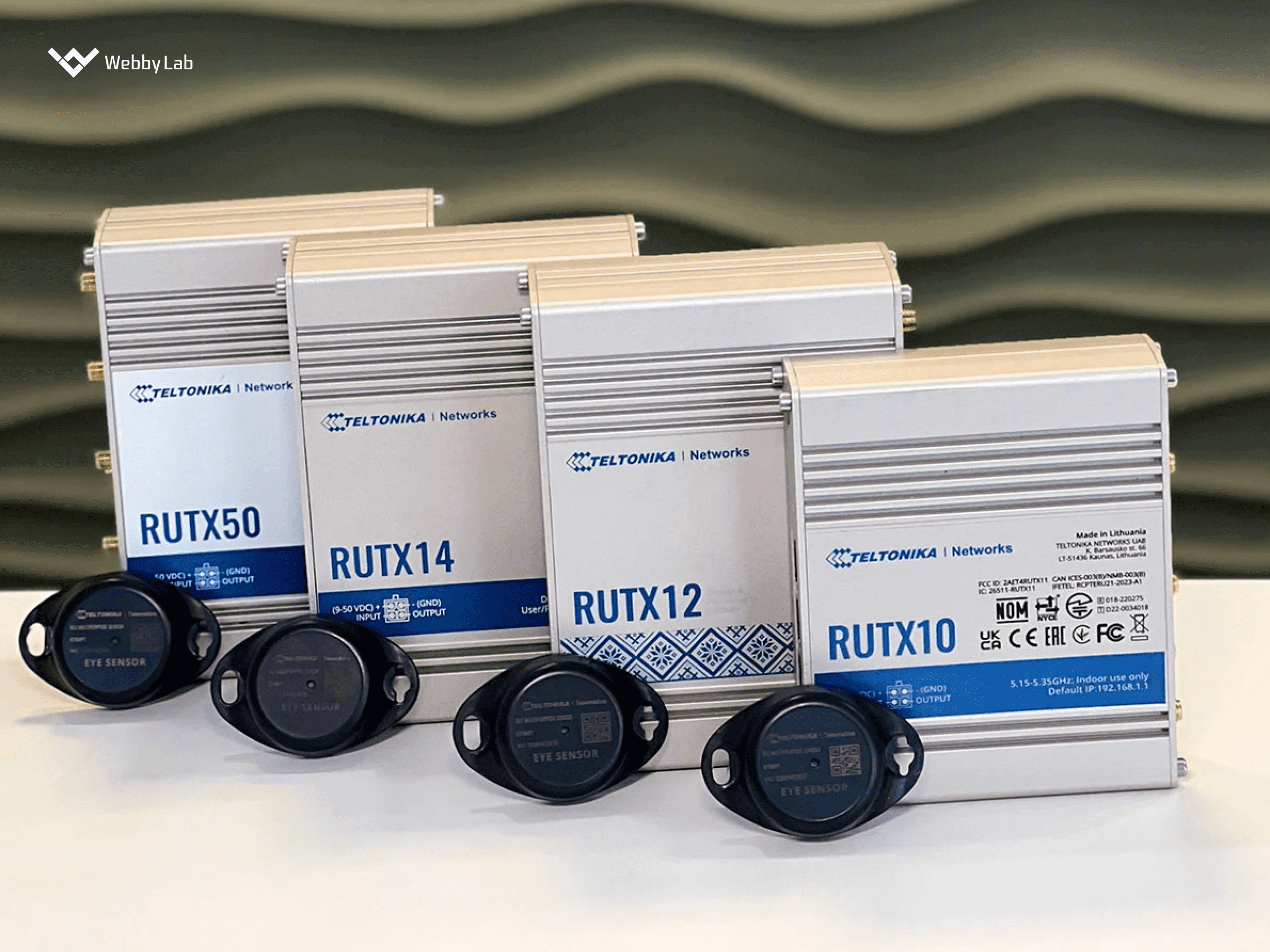IoT in Supply Chain: Benefits, Challenges, and Real-World Examples
Written by:

Kostiantyn Oliynyk
Head of IoT at Webbylab
With a robust academic background in Telecommunication Systems Engineering, I apply my knowledge to lead innovations in the IoT domain. Starting as the first team member in the newly formed IoT department at WebbyLab, I've spearheaded its growth, fostering the expansion into embedded and hardware development alongside our core software projects. My dedication lies in pushing the boundaries of IoT technology, fostering a culture of innovation and excellence that profoundly impacts our clients' operational success.
The application of IoT in logistics comprises devices like RFID tags, GPS trackers, sensors, and smart shelves. These solutions help increase visibility, simplify inventory management, and automate processes.
In the food supply chain, the Internet of Things finds applications during transportation and storage. This tech ensures the freshness and quality of goods through real-time data on temperature, humidity, and other factors.
IoT has a positive impact on the supply chain operations. It provides real-time insights into the location, movement, and condition of goods, enhancing overall operational efficiency, reducing costs, and minimizing risks.
The usage of IoT in the logistics industry is projected to expand over the years. The expenditures on the Internet of Things solutions are steadily growing, highlighting the increased demand for advanced technologies in the logistics sector.
